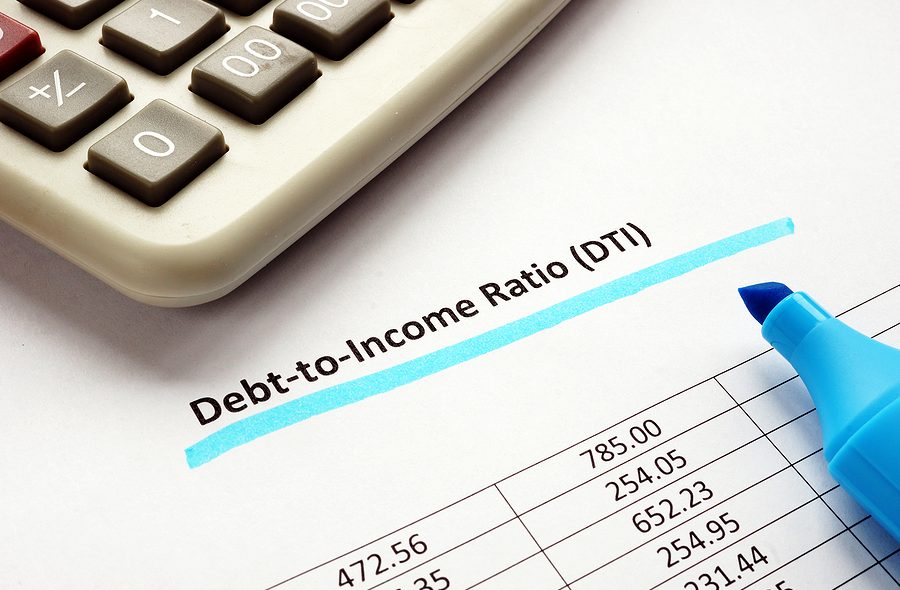A person’s credit score is not the only figure lenders look to when determining whether to approve an application for financing. Many times, lenders will also look to the applicant’s debt-to-income ratio (DTI) when making a determination to approve financing.
A consumer’s debt-to-income ratio looks at whether the individual is bringing in enough income to meet his or her monthly bills. The actual DTI figure is computed by taking the consumer’s gross monthly income and dividing it by his or her monthly debt payments. The result is the person’s DTI.
Every lender looks at the DTI ratio differently. For some, the credit score makes all the difference, while others will weigh the DTI ratio heavily when making a decision on lending.
Essentially, the DTI ratio allows lenders to assess a potential borrower’s financial stability. Someone with a high DTI may indicate that a person is barely making ends meet, and lending additional financing would be a risk.
According to Wells Fargo, a stable DTI ratio range is anything below 35 percent. With a DTI of 35 percent, a consumer should have enough money left over every month after paying his or her bills.
A DTI between 36 and 49 percent is considered manageable, which means that the applicant’s situation is acceptable. A DTI of 50 percent or higher is not acceptable. This high of a DTI shows that the individual consumer’s debt payments take up a substantial portion of his or her monthly income.
If a consumer is looking to be approved for a mortgage, the role his or her DTI plays in the approval process is a little more complicated. Mortgage lenders will look at two different types of DTI ratios when making lending determinations. One DTI ratio is called the front-end ratio, and this looks at how much of the consumer’s gross income will go towards his or her housing costs. An ideal front-end DTI ratio is 28 percent or lower. The back-end DTI ratio looks at how much of the consumer’s gross income goes towards payment on all debts, including housing costs. Lenders look for back-end DTI ratios of 36 percent or lower.
A person’s DTI can be improved by several methods. First, the ratio can be improved by increasing the amount of income brought in monthly. Keep in mind, this method takes time and is not an overnight fix by any means. In fact, many lenders will not count income that has just started. They look toward longevity and stability, instead.
It may be best to work at lowering the monthly debt payments that are made every month. Consumers who are serious about reducing their monthly payments should review their spending habits to see where certain cuts can be made. It may be wise to tackle certain debts first, paying them off to eliminate debt. Credit card debts and similar revolving unsecured debts should be focused on first before tackling installment loan payments. If a consumer has multiple credit card payments, it may be wise to consider debt consolidation in an effort to reduce how many payments are made, lower the monthly payments, and reduce the interest rate paid on the debts.
Please click here to read more.
If you have questions on this topic or are in financial crisis and considering filing for bankruptcy, contact an experienced Miami bankruptcy attorney who can advise you of all of your options. As an experienced CPA as well as a proven bankruptcy lawyer, Timothy Kingcade knows how to help clients take full advantage of the bankruptcy laws to protect their assets and get successful results. Since 1996 Kingcade Garcia McMaken has been helping people from all walks of life build a better tomorrow. Our attorneys’ help thousands of people every year take advantage of their rights under bankruptcy protection to restart, rebuild and recover. The day you hire our firm, we will contact your creditors to stop the harassment. You can also find useful consumer information on the Kingcade Garcia McMaken website at www.miamibankruptcy.com.

